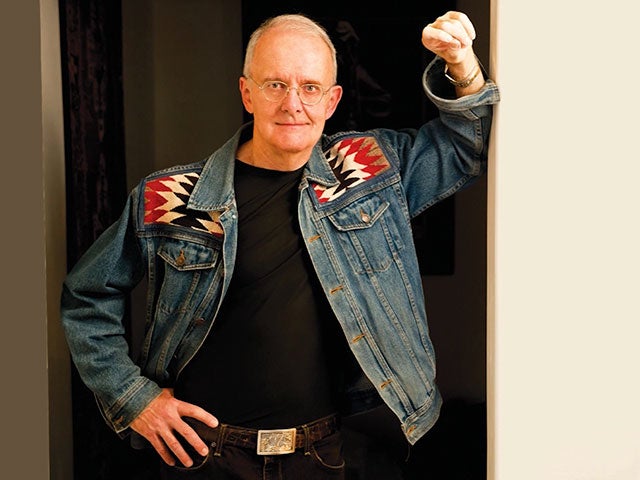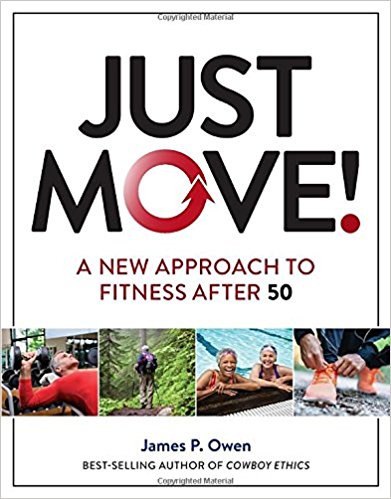Get Fit After 50
NEVER TOO LATE
James got a wake-up call to get fit on the day he turned 70. He was watching a video of himself shuffling up to the podium to give a speech. All he could think of was how old he looked. He knew he had to do something. In the past he was so busy building a career that fitness never even crossed his mind. For 30 years, he had no exercise program at all and even made a few attempts at getting in shape, but nothing seemed to stick. Determined not to repeat the mistakes of his past, he banished any mental image of himself with rippling muscles. Ego and vanity would not derail him from his fitness goals. One of his biggest goals at 70 was to be able to carry on the ordinary activities of life without hurting himself or being restricted due to stiffness and pain. He wanted to stay mobile, active, and energetic. To accomplish this, James hired a trainer to help guide him on his fitness journey, and week-by-week he began slowly getting stronger and more solid. The core-strength work he did with his trainer helped his back pain virtually disappear. James began to see improvements in the gym, which carried over into the rest of his life. For example, getting in and out of the car, carrying groceries, and moving from place to place. Over time he began to do these activities with more ease and fluidity.
Today James is 76 and he feels great. At his last doctor’s visit, his doctor startled with his test results: a low resting heart rate, normal blood pressure, and a significant drop in his LDL cholesterol (the “bad” one). He was unable to do a single proper push-up and now he does 50. When he began his fitness journey, James worked out because he felt he had to, but now he works out because he wants to. “Fitness has become my most satisfying hobby,” shares James. He stays motivated because the stark reality of “getting fit is nowhere near as hard as dealing with the infirmities of old age,” reveals James.
FUNCTIONAL FITNESS
Functional fitness is about training your body to navigate all the daily activities of life without strain, pain, or injury. For example, walking, bending, reaching, climbing or lifting all requires multiple muscle groups working together. In order to do them with ease, you need to address all five facets of fitness: core stability and strength, flexibility, balance, muscular strength, and cardiovascular endurance. It is important for aging adults to realize they have more control over the aging process than they may think.
He says don’t be intimidated if you walk into a gym and see members with rippling muscles. “The old gym culture’s focus on appearance rather than function no longer fits the baby boomer generation,” shares James. Getting fit is different when you are older for several reasons:
- You finally have more time to devote – James says an hour a day, six days a week is needed to cover the basics.
- There’s no shortage of motivation - lower your risk of life threatening diseases and ease aches and pains.
- It’s about how your body works not how it looks – leave the heavy lifting to the youngsters.
- If you rest, you rust – you got to keep moving.
- No one kind of exercise will do it all – cardio alone will not cut it.
- Building lean muscle becomes even more important – otherwise strength and muscle mass decline and your waistline balloons.
- It takes more understanding of body mechanics – know how to deal with weaknesses and injuries.
- Customizing your program is essential – find what works for you.
- The stakes are higher – how fit you are has a lot to do with the quality of your remaining years.
- You’re the one in charge – anything you do is better than nothing…how hard you work is up to you.
Some of the consequences of being a couch potato include: (1) higher risks of serious disease; (2) less mobility and physical function; (3) more falls and injuries; and (4) loss of independence. The good news is that exercise is the most effective way to slow down the aging process. Benefits of staying active include: (1) look and feel young; (2) help control your weight; (3) give your brain a boost; (3) avoid falls and injuries; (4) ease chronic pain; (5) reduce your need for prescription drugs; and (6) prevent osteoporosis. “We all get older, but that doesn’t mean we have to get old,” says James. “The key is to start from wherever you are, set realistic goals, and make consistent, incremental progress.”
GETTING FIT
James has achieved his level of health by making fitness a way of life over a period of time rather than trying to learn or change everything at once. He recommends investing 1 hour a day, 6 days – the path, the pace, and the extracurriculars are all up to you. His program capitalizes on four steps:
- Tune In To Your Body –Practice conscious breathing. Stretch to increase range of motion and elongate muscles.
- Get In The Fitness Habit – New habits aren’t created overnight. Take charge of your posture. Don’t slouch. Use your core muscles to stand and sit because it gives your body a solid base of support.
- Begin Building Strength – Focus on good form. Practice good alignment. Use your breathing. Work toward full range of motion. Be realistic.
- Advance To A Full Body Workout – After mastering basic exercises, advance in your fitness journey, but be selective, add challenge gradually, don’t be in denial about your physical issues and weaknesses, and keep ego out of it.





